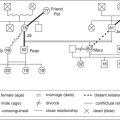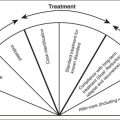Chapter 12 PSYCHIATRIC HISTORY TAKING
INTRODUCTION
Comprehensive psychiatric evaluation includes history taking, mental state examination, physical examination, laboratory investigations, neuroimaging, neuropsychological assessment, diagnostic formulation and treatment planning. This chapter is devoted to history taking from an older person in the community setting. In most clinical situations, the history provides more diagnostically useful information than the mental state examination and its value should not be underestimated. This chapter should be read in conjunction with the chapters on specific mental health problems.
PREPARATION FOR THE INITIAL HOME VISIT
Prior to setting out for the home visit, the mental health worker needs to check that they have everything they will need. They should check that they have a fully charged mobile telephone and that their vehicle has sufficient fuel for the round trip, which in rural or remote settings could be several hundred kilometres. They need to let their administrative officer or supervisor know what their plans are so that an emergency plan can be instituted if they do not return to base within the expected timeframe. They need to check that they have the necessary assessment paperwork, including any forms that might be required for involuntary assessment or treatment under the local Mental Health Act. They need to check that they have a physical examination kit if that is to be part of their assessment.
THE HOME VISIT
Many older people living at home have a spouse, adult child, neighbour or other supporter present during the visit. Further information can often be obtained from that person, particularly where the person being assessed is cognitively impaired or lacking insight in the context of psychosis. Older people seen on domiciliary visits will sometimes want to give their history in the presence of a supporter, but sometimes will want to give it in private. The mental health worker should respect the person’s wishes in this regard, if it is safe to do so. If there are two mental health workers on a home visit, one can take informants into another part of the house, enabling the older person to be seen alone.
VISITING A RESIDENTIAL AGED CARE FACILITY
Formal psychiatric history taking (as described below) with people with moderate or severe dementia will usually be limited to obtaining information from collateral sources such as staff, family members, GP records and hospital records. However, in such cases challenging behaviours often prompt the referral. There are various synonyms for these challenging behaviours, including disruptive behaviour, behaviours of concern, and behavioural and psychological symptoms of dementia (BPSD). Although an approach to the assessment of challenging behaviours is discussed separately (see Ch 28), it is important not to neglect those aspects of the standard psychiatric history that can still be obtained from informants other than the older person.
Stay updated, free articles. Join our Telegram channel

Full access? Get Clinical Tree





